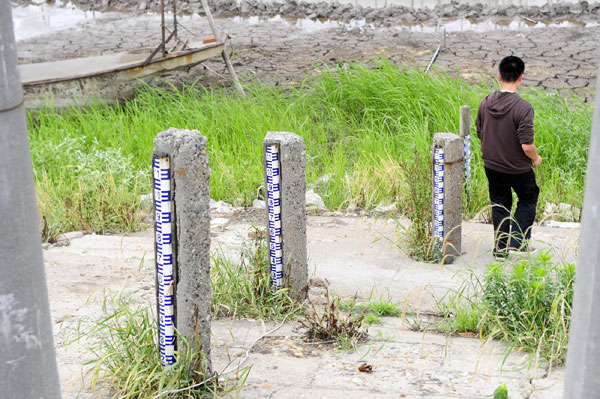Latest News
Poor water management adds pain to dry spell
(Xinhua)
Updated: 2011-05-31 17:16
 |
Large Medium Small |
WUHAN - In the village of Huashan in Central China's Hubei province, renowned as the "Land of a Thousand Lakes", the residents have been accustomed to lining up with plastic buckets to carry home water delivered by fire trucks.
The scarce water was carefully used, with which a family would wash their hands or rinse rice first, and then water paddy fields or livestock, said Yu Chunming, Party chief of the village.
"The villagers don't even want to discard the water that has been used several times, no matter how dirty it has become," Yu said.
In the past two months, a severe drought has been plaguing parts of Hunan, Hubei, Jiangxi, Jiangsu and Anhui provinces, located near the middle and lower reaches of the Yangtze River, the country's longest river.
As of Sunday, the dry weather had left more than three million people short of drinking water, said a statement from the Office of State Flood Control and Drought Relief Headquarters (SFDH).
The drought had also affected about three million hectares of crops, including early- and middle-season rice and cotton, as well as wreaked havoc on aquaculture businesses in the five provinces, said the statement.
Since the beginning of this year, the middle and lower reaches of the Yangtze River have seen a record low rainfall not experienced since 1961, with 40 to 60 percent less rainfall than usual.
Meteorologists blame the "La Nina" phenomenon, which occurred from July 2010 to April 2011, for the unseasonable drought, saying it disrupted normal atmospheric circulation and prevented warm, humid air currents from reaching the river's downstream areas.
Meanwhile, some hydrologists and water officials believe China's weak water resources management has amplified the impact of the drought on people's livelihoods.
Unprepared for drought
"We are caught unprepared," some water officials in the drought-ravaged areas told Xinhua, adding that they should have been combating water-logging at this time in normal years.
In early spring, some reservoirs and lakes along the middle reach of the Yangtze River began discharging water, as occurs every year, to gear up for the upcoming flood season.
"In our section of the Yangtze River, we have many drainage facilities to release floodwaters, but almost no water pumping sets," said Lei Yunxue, an official with the flood control and drought relief headquarters in Hubei's Jianli county.
The Chinese government started to spend heavily in dam and dike projects after massive flooding of parts of the Yangtze River killed 4,150 people in 1998.
"The move was fully justified. But the government should be aware that water conservancy does not equate to a flood control system," said Fang Bing, deputy general manager of Fuwa Group Co Ltd, a grain processing company in Jianli County.
Lei suggested the government attach equal importance to flood control and drought relief work in areas normally boasting abundant rainfall.
Last year, a prolonged spring drought once left tens of millions of people without easy access to drinking water in Southwest China's Yunnan, Sichuan, Guizhou, Guangxi and Chongqing regions, all traditionally wet areas.
"Given that extreme weather has become frequent, the current water conservancy scheme is apparently unscientific," Lei said.
So far, China has allocated 1.96 billion yuan ($302 million) to drought relief work. Further, 16,000 temporary water pumping facilities have been set up and 6.6 billion cubic meters of water have been diverted from mainstreams of the Yangtze River and nearby lakes in the five provinces to ease the drought, according to the SFDH.
